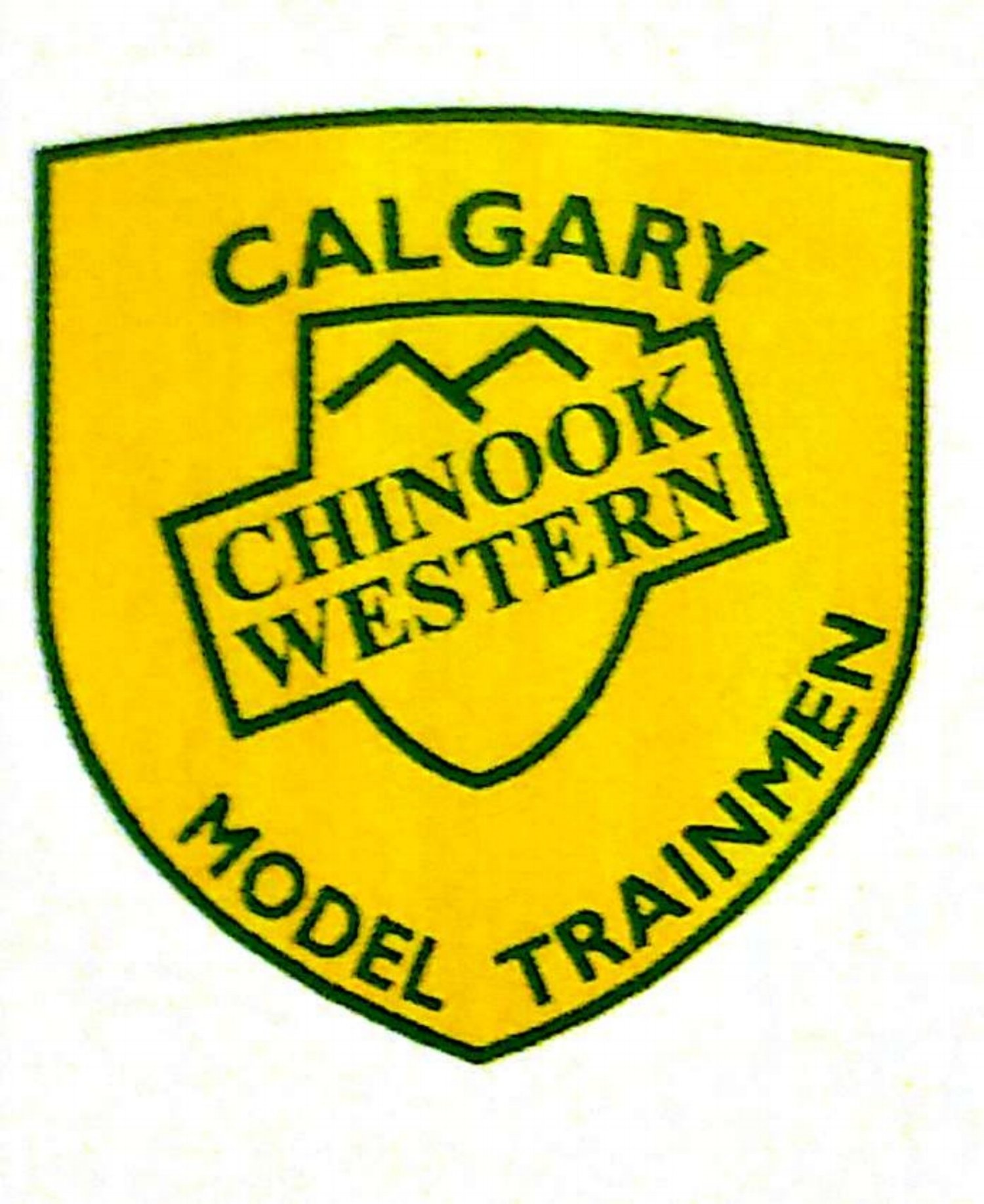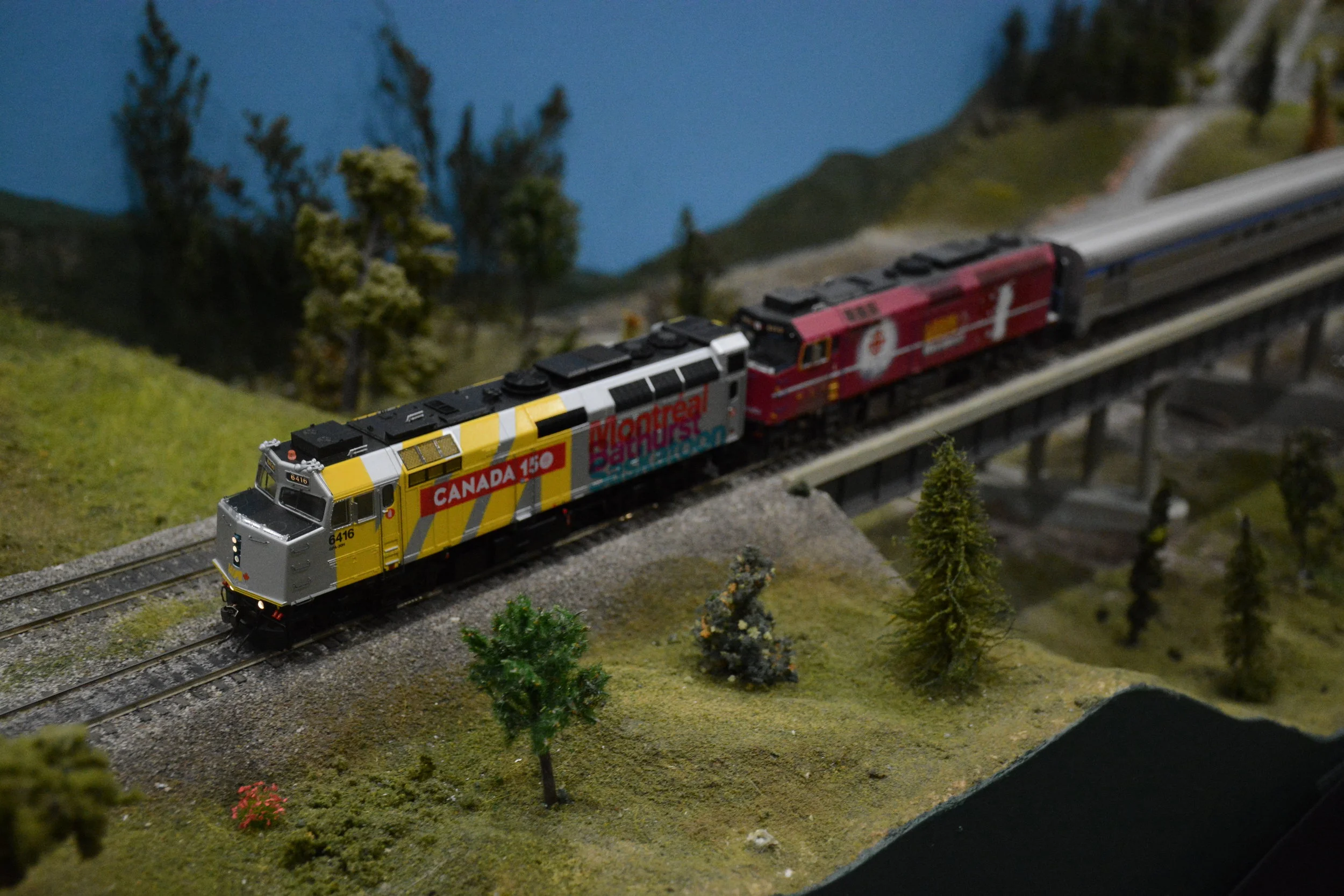CHINOOK SIDING CMT NEWSLETTER JUNE, 2017
President: Andrew Love Directors: Brookes Harrow, Garth Praestagaard, Ron Sauer, Nathan Daniel.
Past President: Merv Howitt Communications/Membership: Dale Sproule
Community Hall Liason: Paul Foster
ATTENTION MEMBERS: THIS IS YOUR NEWSLETTER! I WILL SUBMIT WHAT EVER COMES MY WAY. IF YOU HAVE MATERIAL FOR SWAP OR SALE, MAYBE AN INQUIRY OF SOME SORT…….THIS IS THE PLACE!
In this issue………………….......….
- SUPERTRAIN Report
- RMMBC Report, Clinic lineup
- 6th Division Spring Meet, Clinic lineup
- Model Trains at the Cave!
- MR Magazine DCC Control station
- Handcar Shed Member Build
Well gang there has been a lot of activitiy in the Calgary area since my last newsletter, so much to tell you about.
SUPERTRAIN: attracted 10,908 members of the public to Canada’s Largest Model Train Show April 22-23. CMT operated our modules and a fair number of members came out to operate and help members of the public operate our layout. A BIG thanks goes to Harvey Tavener for coordinating the setup/checkout prior to the show then movement to and from the show.
In an effort to get more CMT members interested in attending Conventions, I`ll report on my most recent 2 events.
RMMBC, VANCOUVER
I attended The Railway Modellers Meet of British Columbia (RMMBC) from May 5-7, the 2nd annual 7th Division PNR Modellers Meet centered at Simon Fraser University along with 2 friends from Lethbridge and I wantedto review the many events. Last year saw 59 registrants, this time saw 109. Before the meet started there was mandatory hobby shopping at Central Hobbies. Hal Kinsey offered 10% off purchases to delegates then with proof of purchase he returned 5% of purchases back to 7th Division meet organizers to help fund the 2018 meet, a really neat idea! Most events ran out of Simon Fraser University where Dormitory housing was available at $ 39 per night. Registration was $ 45. Seven layouts were available Friday evening for operating sessions and I was fortunate to operate on the Mark Dance N-scale layout (photo below). Mark has several you-tube presentations, you gotta see these (listed below). All meals were held in the Student dining Centre, steps away from the 2 clinic rooms. Breakfast Buffet was $5.95, Lunch Buffet$7.95 and Dinner Buffet$9.95 Food selection was wide and varied and really good too! Events: Saturday: 10 clinics running in 2 rooms during the day (these are detailed below), a noon-time “Meet The Modeller”, where 89 models were available for viewing and the builder described his/her techniques. In fact there were so many models that the “Meet The Modeller” had to be carried over 2 days instead of the advertised one day. Maybe what made this idea so popular was that were no Contests, just “Meet The Modeller”. Saturday evening saw a choice of operating on another 8 layouts, a self-guided layout tour to 4 locations or taking part in a “Make and Take” construction evening, a typical Railroad Loading Ramp was the subject matter that you built under supervision ten took it home, photo included below. Sunday saw another 10 clinics and a 4 pm wrap-up. We drove to Kamloops Sunday evening, then Monday saw a visit to Kelly’s Caboose, a hobby shop that recently re-located from Kamloops to Savona, ½ hour West of Kamloops. Railfanning followed then home again.
Craft Switcher Operations on the Columbia and Western:
Part 1: https://youtu.be/b0jYdTrsq4A
Part 2: https://youtu.be/xOnHCyw4u0Y
Part 3: https://youtu.be/VJAwQuyBkws
Part 4: https://youtu.be/wnF-gWlPgjY
Part 5: https://youtu.be/nXo8DDql2Mo
Operations on the Columbia and Western Part 1: https://youtu.be/V_7Kfp4Jcnw
Operations on the Columbia and Western Part 2: https://youtu.be/ggJOLpYe9w8
Lafferty to Farron: https://www.youtube.com/watch?v=3VS5ndhXldk
CLINICS PRESENTED AT RMMBC
Tom Beaton: So You Think You Can't Paint a Backdrop?: This clinic is for the faint of heart who think they can't paint a backdrop. It consists of a demonstration of how to do it using only four colors of quick drying acrylics and a few brushes.There will be a hand out to take home so you can practice there.
Jim Little: CPR Lidgerwoods: The history of CPR's Lidgerwood machines and how to go about building one
Ken Rutherford and Mark Dance: Weathering Your Fleet: The clinicians will describe and demonstrate their different techniques for achieving very respectable weathering results on your rolling stock fleet without an artist's diploma or a huge time investment. Techniques introduced will include Pan Pastels coloured pastels, weathering chalks, brushed acrylics, and airbrush fades.
Mark Wittrup: CPR Maintenance of Way Equipment: Canadian Pacific Maintenance of Way Equipment – A Personal Journey. Maintenance of way equipment is important to maintaining effective
railway operations, and often consists of ex-revenue equipment, with or without modifications. All railroads have MOW equipment, but not all layouts do. I will discuss why I like MOW, how I use it on my layouts,and provide a quick overview on types of common CP MOW equipment. To finish, I will discuss and display a few easily modelled examples that can be made using currently available HO models.
Jim Little: Building Structures with Hydrocal: The author will explain the how's and why's he built a structure from scratch using Hydrocal. Sample building parts will be shown, along with the molds made.
David Harris: LLC and signalling: LCC is an NMRA standard for an accessory bus that operates beside, and in conjunction with, your layout's traction control. Similarly to DCC, it allows users to buy compatible products from multiple sources. This clinic introduces the LCC concepts and how they can be applied to your MRR including signalling and applications for modular layouts.
Max Magliaro: Techniques for Scratchbuilding Steam Locomotives - Part 1: The clinician presents a variety of his favorite techniques for scratchbuilding N Scale steam locomotives. Topics covered will include: tools and materials and where to find them; methods for making shapes and parts in metal; how to find and use prototype drawings to make patterns; motors, gears and gearheads, quartering.
Rob Kirkham: CPR's Box Car Transition, 1908-1928: Using photo of cars in service and preserved in museums & farm yards across Canada, this clinic focuses on the cars that weren’t built to theFowler/Dominion Car design. The clinic looks at some of the Box Car and Auto-Box Car design innovations and re-builds employed by the CPR as the aging “all wood” fleet was modernized and transitioned to the “all steel” era. Some modelling opportunities will also be looked at.
Max Magliaro: Techniques for Scratchbuilding Steam Locomotives part 2: In Part 2 of his clinic, Max will continue his overview of his favorite scratchbuilding techniques including live demonstrations.
Bill Galovich: The 7th Division's Hewlett Slide Collection: The late Bill Hewlett took hundreds of photos in the late '50's of PGE subjects. These were gifted to the NMRA- PNR 7th division and scanned by the clinician who will walk the audience through a hundred or so of what he considers the most interesting.
Doug Wingfield, MMR: Scratchbuilding Structures…or more accurately: How to Get Started Scratchbuilding Structures. The clinic will cover the beginning points of scratchbuilding structures and how to avoid some of the traps we fall into when learning how. It will include conducting research, tools, avoidable errors, basic weathering, and materials to avoid concluding with photos of models I have built - both kit and scratch built. There will be example structures at the clinic of both what can and cannot be done.
Rob Badmington: Track is a Model Too!: This clinic will use prototype and model photos to show how to make track look more realistic; whether using handlaid or flex track. The clinician's career of more than 30 years working for CN and CP’s Engineering departments has given him a real appreciation for the details that make up a railroad’s most important asset – it’s track!
Geoff Gooderham: Resin Casting Made Easy: Resin casting has a reputation as an 'exotic', niche modelling activity; difficult to master and demanding in terms of equipment, material, and skills. It's not! This clinic will introduce the ways in which resin casting can enhance a modeller's skill set and will demonstrate the simple techniques and low cost advantages that are available to all model builders. The presentation will be, as much as possible, a 'hands on' demonstration of master patterns, molds, and castings with plenty of them on hand to handle and inspect. We'll also cast a few simple parts and discuss finishing the parts (including fixing mistakes), techniques for assembly, and the basics of painting.
Mike Barone: Nelson Diesel Shops, operations in the 1970's: This clinic will review the facilities and discuss operations as seen by the Clinician during his time as a summer student between 1968 and 1974 working as a laborer/hostler's helper. During this time FM C Liners and H liners were the predominate
power but other locomotives made frequent appearances.
Larry Sebelley: What is This Thing Called Free-mo?: The clinician will discuss the concepts and standards that drive Free-mo to excellence in modelling. He will cover module planning, construction,
track laying, wiring and scenery. Specifications for end plates and track arrangements, plus each of the 4 required electrical busses as well as the 1 optional bus will be reviewed. How a group of modules come together to create an operational layout will be described. Although Free-mo was first designed as an HO scale project, its specifications are easily translated to N scale.
Mark Dance: For Those About to Rock!: Techniques and demonstrations on how to cast, sculpt, paint and detail - yes, detail! - rockwork for your layout.
Bill Sornsin: Planning & Building the GN Cascade Division: The speaker will describe his prototype research, design and construction of this once-in-a-lifetime, 3000 square foot multi-deck layout housed in a purpose-built structure. The Cascade Division is an ambitious layout which has been designed to be built
and operated in stages.

















